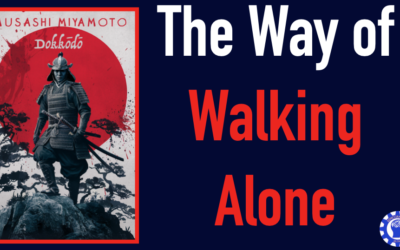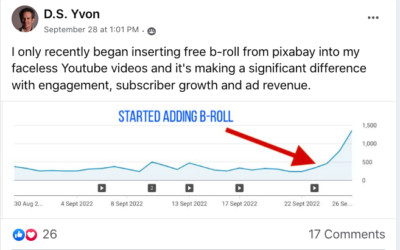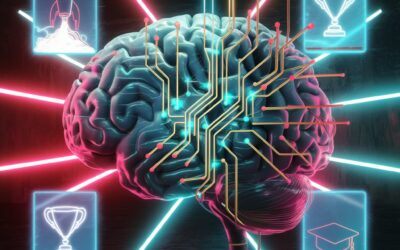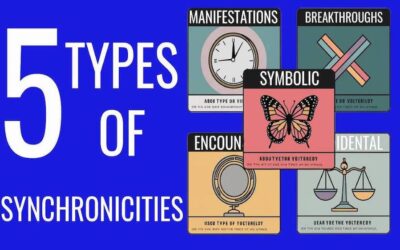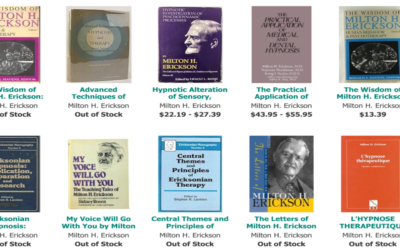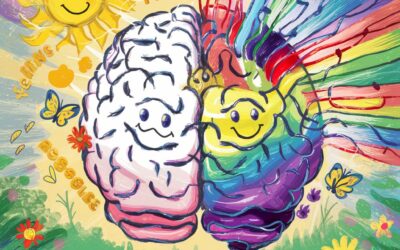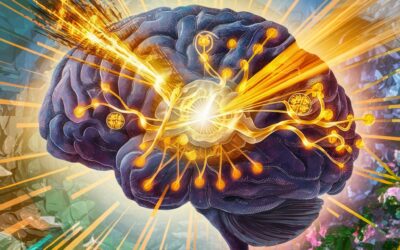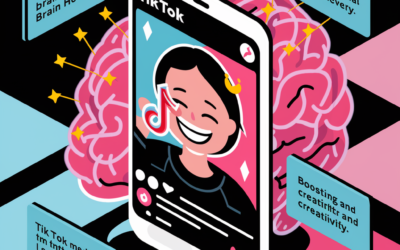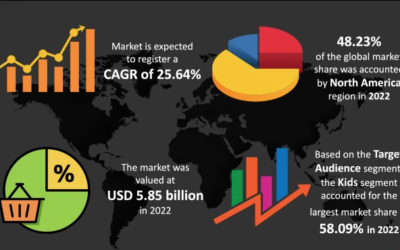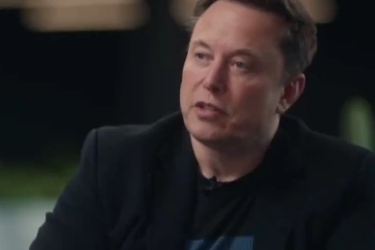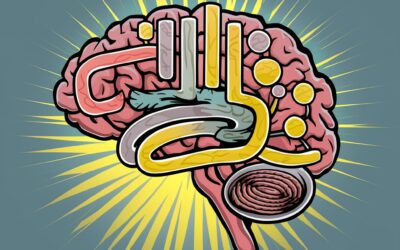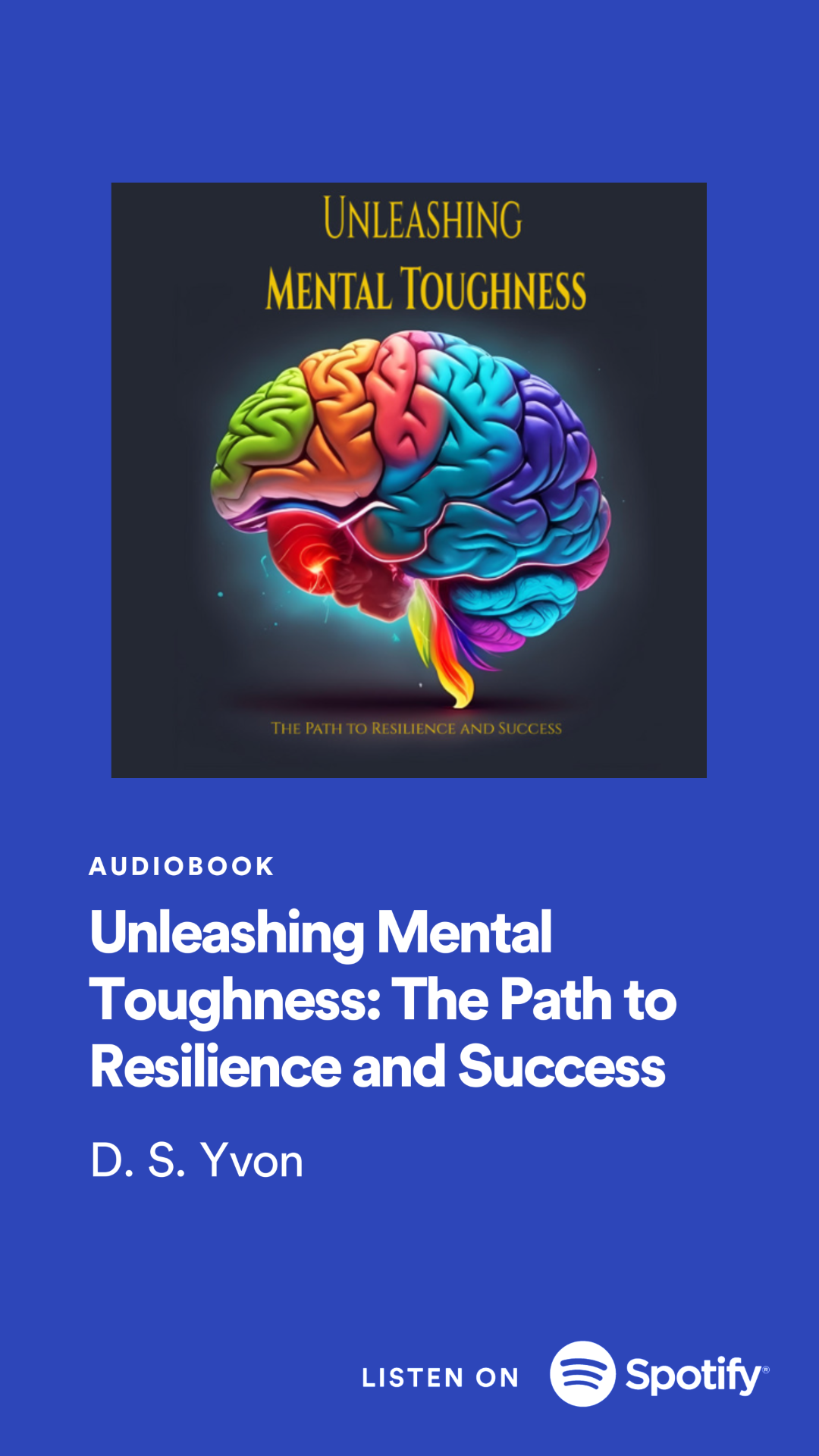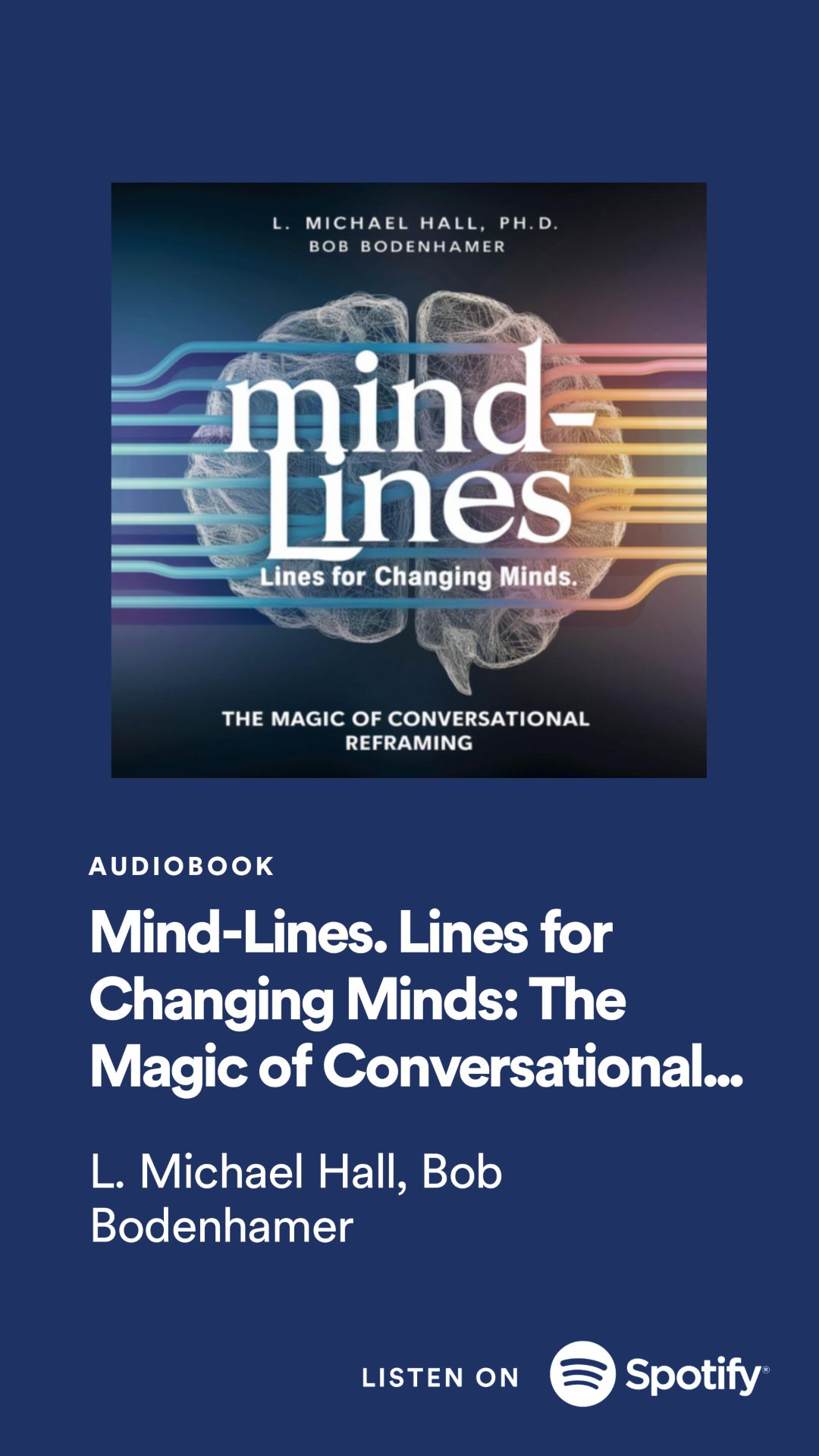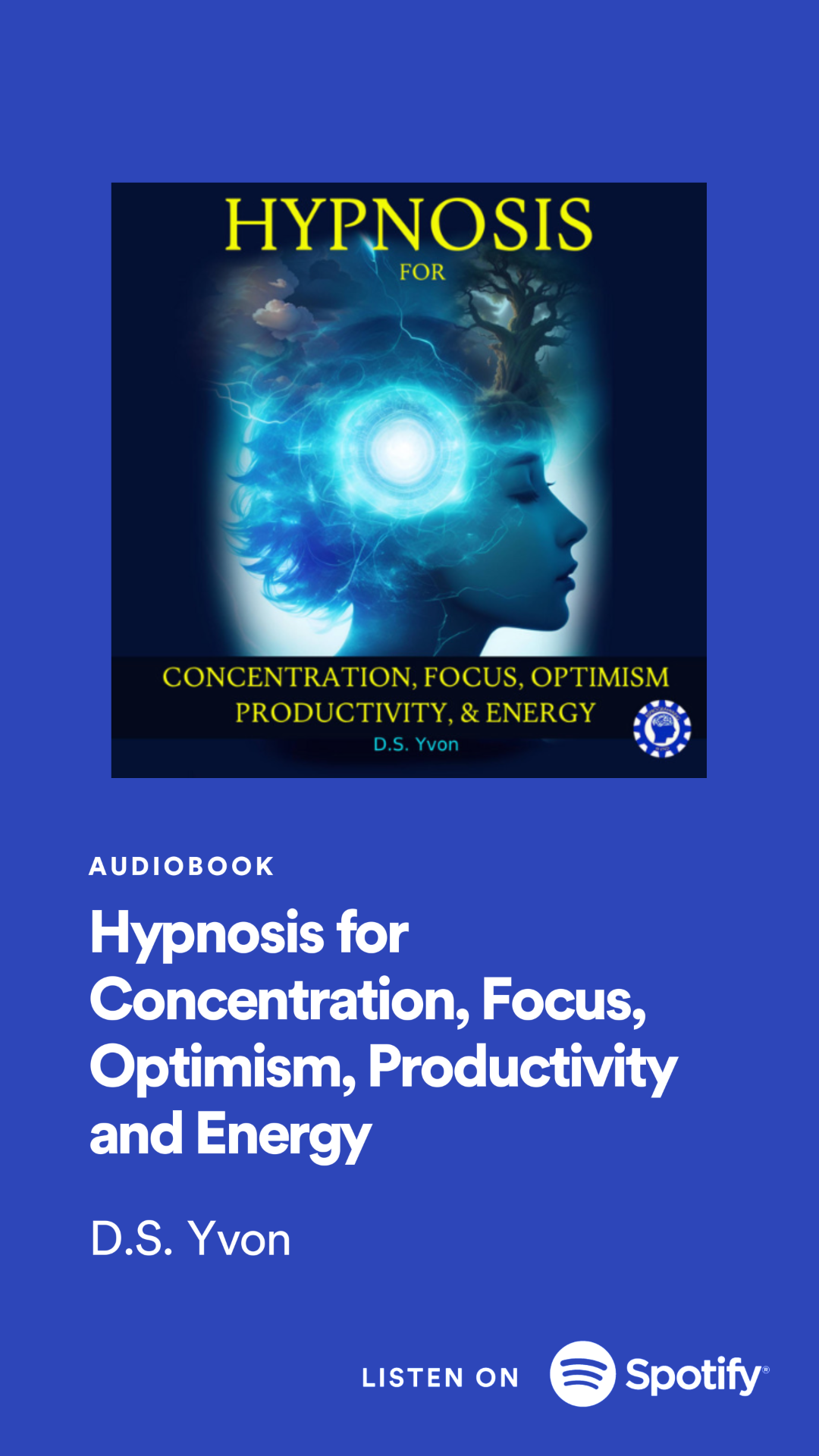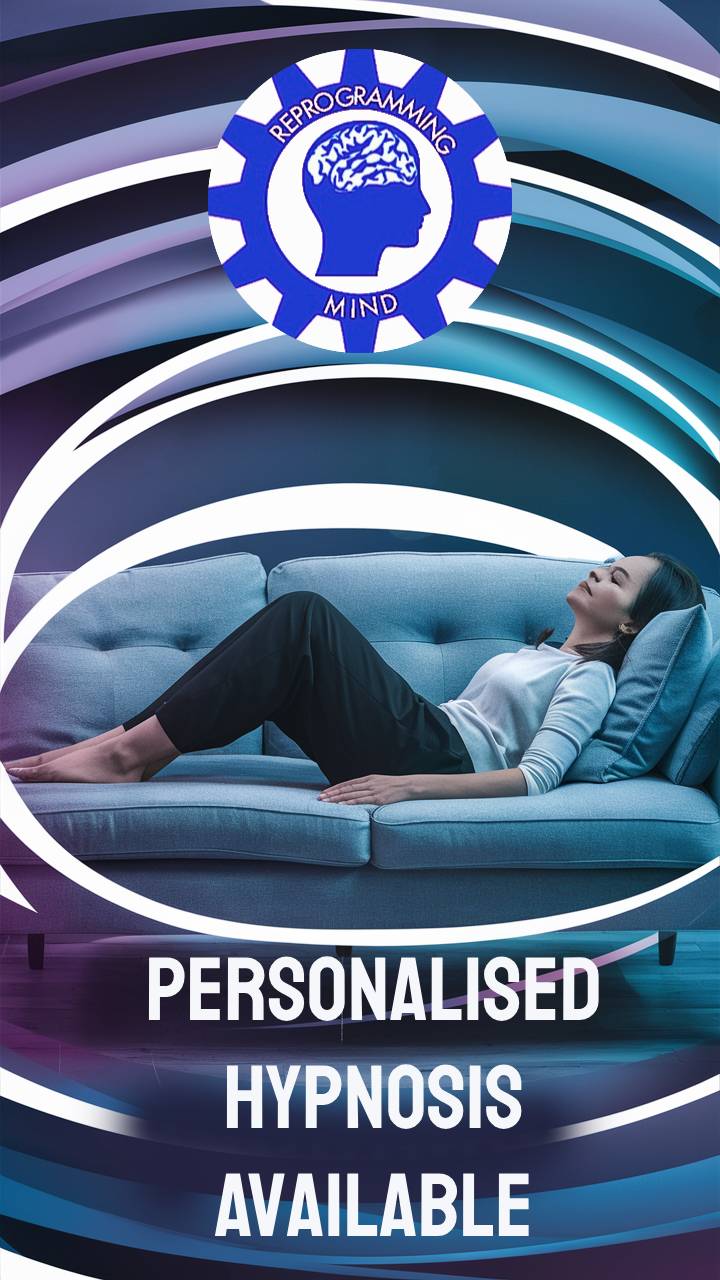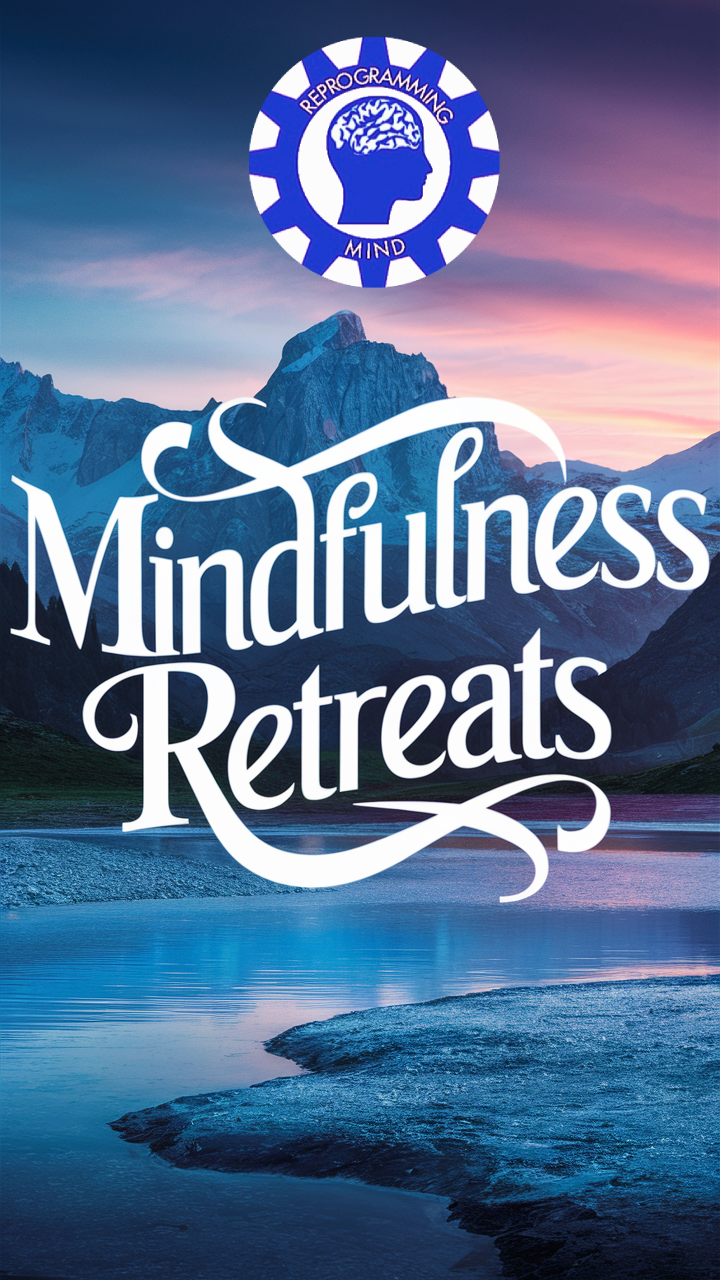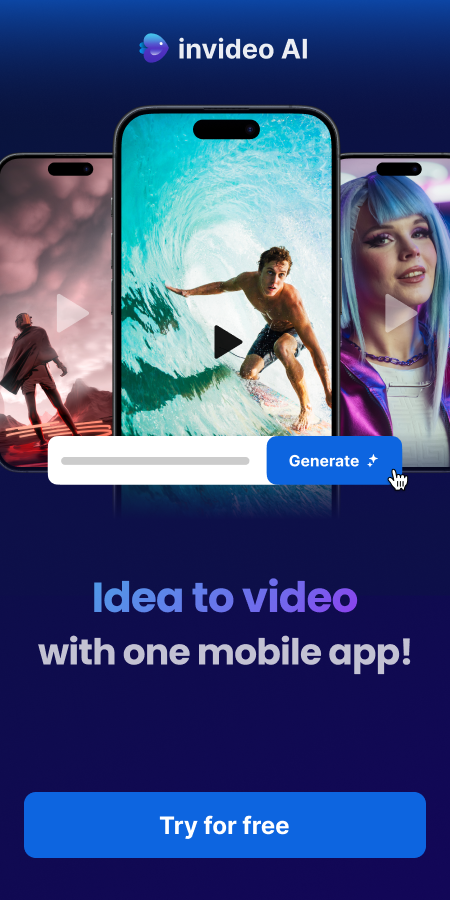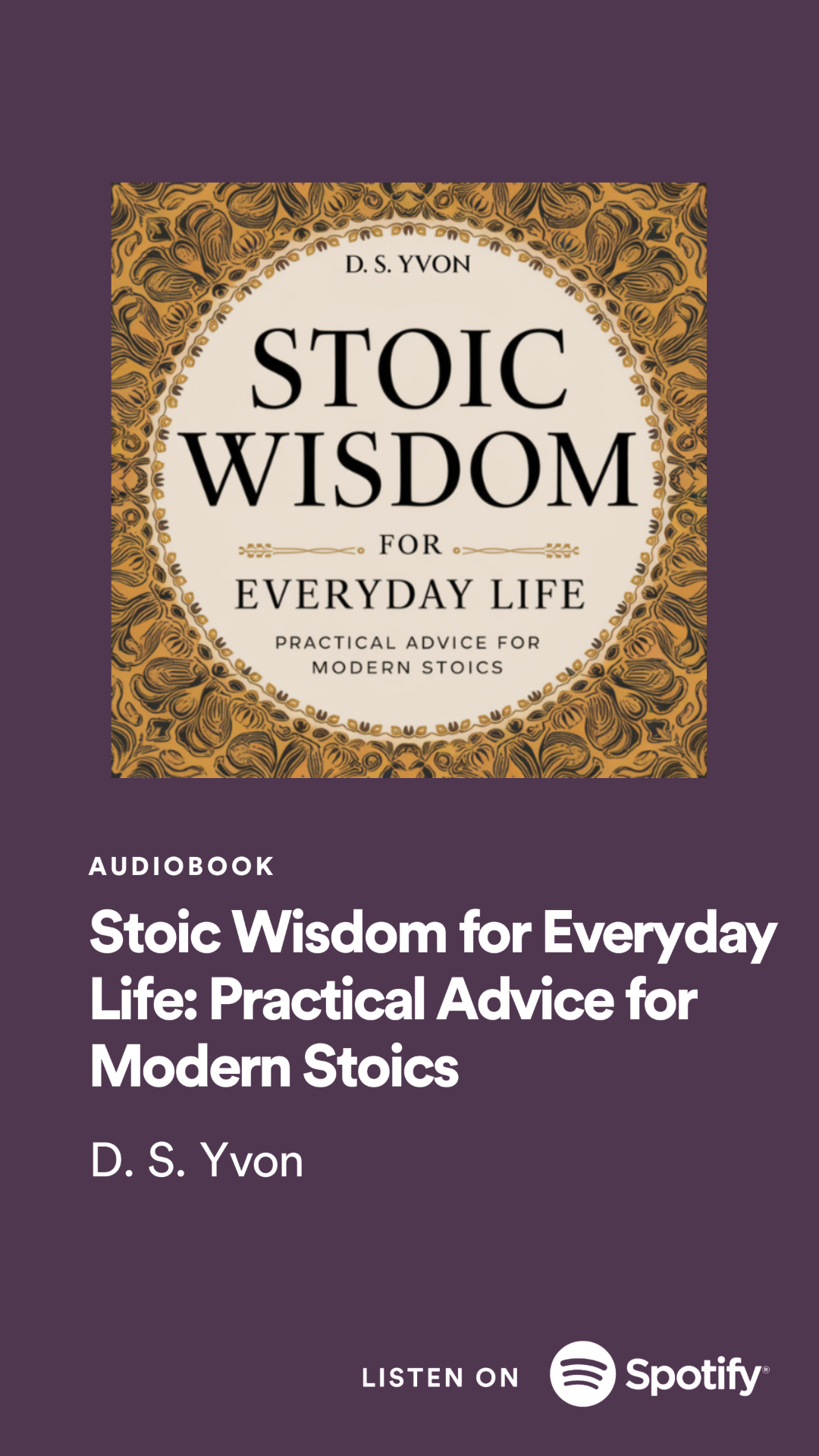


Why You Should Go On A Meditation Retreat
What is a Meditation Retreat?
The Benefits of Attending a Meditation Retreat
1. Stress Reduction and Relaxation
2. Improved Mental Clarity and Focus
3. Emotional Healing and Resilience
4. Deepened Spiritual Connection
5. Physical Health Benefits
6. Enhanced Self-Awareness and Personal Growth
7. Improved Relationships
8. Digital Detox
Preparing for Your Meditation Retreat
Conclusion: A Gift to Yourself
 The benefits of a meditation retreat extend far beyond the time you spend away. Many participants find that the skills and insights gained during their retreat continue to positively impact their lives long after they've returned home. From improved stress management and emotional resilience to greater clarity and purpose in life, the gifts of a meditation retreat can be truly life-changing.
The benefits of a meditation retreat extend far beyond the time you spend away. Many participants find that the skills and insights gained during their retreat continue to positively impact their lives long after they've returned home. From improved stress management and emotional resilience to greater clarity and purpose in life, the gifts of a meditation retreat can be truly life-changing.
The Evolutionary and Psychological Challenges of Stock Trading
Everything You Need to About Short Term Memory But Forgot to Ask
Trading Psychology and How to Improve Yours
Why You Should Go On A Meditation Retreat
100 Best Audiobooks on Behavioral Economics, Psychology, Meditation, Self-improvement
Top 22 Best Audiobooks Focused on Mental Health and Self-improvement
Can a Breakup Lead to Depression?
“The Art of Stealth: How Viet Cong Sappers Cultivated a Mindset of Invisibility”
Why so Many School Shootings? The Tragedy of School Shootings in America: A Look into the Deadliest Incidents and the Minds Behind Them
Greatest Advert of All Time – How The Cadbury Gorilla Became a Drumming Sensation That Revolutionized Advertising

100 Best Audiobooks on Behavioral Economics, Psychology, Meditation, Self-improvement
For more check out the top 22 recommended audiobooks focused on mental health and self improvement by clicking here.

Top 22 Best Audiobooks Focused on Mental Health and Self-improvement
1. The 7 Habits of Highly Effective People by Stephen R. Covey
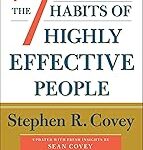 A foundational self-help book that outlines seven key principles for personal and professional effectiveness. The habits are designed to foster personal growth, enhance interpersonal relationships, and encourage proactive behavior, emphasizing the importance of character and integrity over superficial personality traits. Since its publication in 1989, the book has inspired millions, providing a timeless framework for achieving meaningful change and success in various aspects of life.
A foundational self-help book that outlines seven key principles for personal and professional effectiveness. The habits are designed to foster personal growth, enhance interpersonal relationships, and encourage proactive behavior, emphasizing the importance of character and integrity over superficial personality traits. Since its publication in 1989, the book has inspired millions, providing a timeless framework for achieving meaningful change and success in various aspects of life.
A classic guide to personal and professional effectiveness, narrated by the author himself.
2. Unfu*k Yourself: Get Out of Your Head and into Your Life by Gary John Bishop
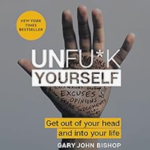 This straightforward self-help audiobook offers a no-nonsense approach to overcoming self-imposed limitations. Narrated by the author himself, it provides tools and advice to combat negative self-talk and self-sabotaging behaviors. The audiobook encourages listeners to take responsibility for their lives and offers seven powerful assertions to help them move past obstacles and thrive.
This straightforward self-help audiobook offers a no-nonsense approach to overcoming self-imposed limitations. Narrated by the author himself, it provides tools and advice to combat negative self-talk and self-sabotaging behaviors. The audiobook encourages listeners to take responsibility for their lives and offers seven powerful assertions to help them move past obstacles and thrive.
3. Take Control of Your Life: How to Silence Fear and Win the Mental Game by Mel Robbins
 Mel Robbins' book, Take Control of Your Life: How to Silence Fear and Win the Mental Game, offers readers practical strategies to overcome fear and self-doubt, empowering them to take decisive action in their lives. Through personal anecdotes and research-backed insights, Robbins introduces the concept of the "5-second rule," a technique designed to help individuals act on their impulses before hesitation sets in, thereby breaking the cycle of procrastination. The book serves as a motivational guide, encouraging readers to harness their inner strength and transform their mindset for greater success and fulfillment.
Mel Robbins' book, Take Control of Your Life: How to Silence Fear and Win the Mental Game, offers readers practical strategies to overcome fear and self-doubt, empowering them to take decisive action in their lives. Through personal anecdotes and research-backed insights, Robbins introduces the concept of the "5-second rule," a technique designed to help individuals act on their impulses before hesitation sets in, thereby breaking the cycle of procrastination. The book serves as a motivational guide, encouraging readers to harness their inner strength and transform their mindset for greater success and fulfillment.
4. Let That Sh*t Go: Find Peace of Mind and Happiness in Your Everyday by Nina Purewal and Kate Petriw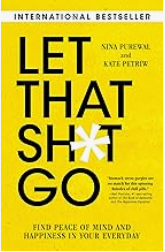 . A refreshing perspective on finding peace and happiness amidst the chaos of everyday life. The audiobook addresses common stressors, such as overwhelming to-do lists and financial worries, offering practical strategies to help listeners release negativity and cultivate mindfulness. Through relatable anecdotes and actionable advice, the authors empower listeners to prioritize their mental well-being and embrace a more balanced lifestyle.
. A refreshing perspective on finding peace and happiness amidst the chaos of everyday life. The audiobook addresses common stressors, such as overwhelming to-do lists and financial worries, offering practical strategies to help listeners release negativity and cultivate mindfulness. Through relatable anecdotes and actionable advice, the authors empower listeners to prioritize their mental well-being and embrace a more balanced lifestyle.
A quote from "Let That Shit Go" by Bruna Nessif emphasizes the importance of releasing negativity: "Unquestionably, letting go of all the shit that life throws at you is not a piece of cake, but it is important to let go in order to live in the moment."
5. Healing Your Emotional Self: A Powerful Program to Help You Raise Your Self-Esteem by Beverly Engel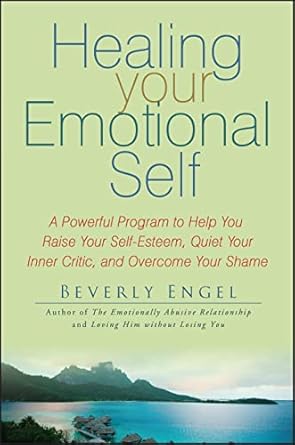
Focuses on overcoming shame and building self-worth through effective therapy techniques.
The book introduces the concept of Mirror Therapy, which helps readers reject distorted self-images formed during childhood. Engel provides practical tools and exercises to quiet one's inner critic and develop a healthier sense of self-worth. A key quote from the book is: "Compassion is the essence of self-esteem. When you have compassion for yourself, you understand and accept yourself the way you are"
6. The Mountain Is You: Transforming Self-Sabotage into Self-Mastery by Brianna Wiest.
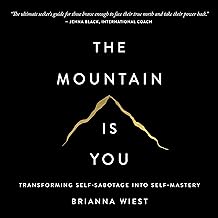 Explores the concept of self-sabotage and provides actionable steps for personal growth.
Explores the concept of self-sabotage and provides actionable steps for personal growth.
"The Mountain Is You" by Brianna Wiest is a transformative book that explores the concept of self-sabotage and offers strategies to overcome it. The author uses the metaphor of a mountain to represent the internal obstacles we face in our journey of personal growth and self-improvement. Through practical insights and thoughtful analysis, Wiest guides readers to confront their fears, embrace change, and cultivate self-mastery. A key quote from the book that encapsulates its message is: "Your mountain is not the block between you and the life you want to live. Facing it is also the only path to your freedom and becoming."
7. Anxiety Rx: A Revolutionary New Prescription for Anxiety Relief by Dr. Russell Kennedy 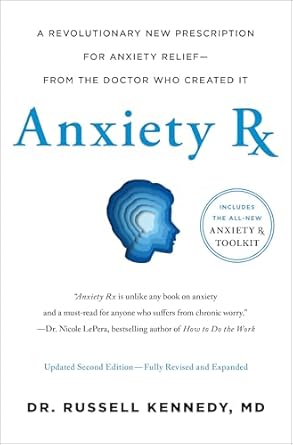 offers a unique perspective on treating anxiety by focusing on the body rather than just the mind. The book proposes that anxiety originates from physical sensations and stored trauma in the body, rather than solely from thoughts in the brain. Dr. Kennedy shares his personal experiences with anxiety and presents techniques to help readers calm their bodies and disconnect physical alarm signals from anxious thoughts.
offers a unique perspective on treating anxiety by focusing on the body rather than just the mind. The book proposes that anxiety originates from physical sensations and stored trauma in the body, rather than solely from thoughts in the brain. Dr. Kennedy shares his personal experiences with anxiety and presents techniques to help readers calm their bodies and disconnect physical alarm signals from anxious thoughts.
A key quote from the book is: "Anxiety starts in the body, where trauma is stored and physical and emotional perception begin."
8. The Subtle Art of Not Giving a F*ck by Mark Manson
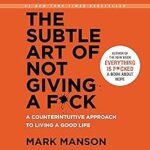 This audiobook challenges the conventional wisdom of positive thinking and offers a refreshingly honest perspective on life. It encourages listeners to embrace life's challenges and focus on what truly matters. The audiobook provides a counterintuitive approach to living a good life by accepting limitations and learning to cope with adversity.
This audiobook challenges the conventional wisdom of positive thinking and offers a refreshingly honest perspective on life. It encourages listeners to embrace life's challenges and focus on what truly matters. The audiobook provides a counterintuitive approach to living a good life by accepting limitations and learning to cope with adversity.
A notable quote from the book encapsulates its essence:“You and everyone you know are going to be dead soon. And in the short amount of time between here and there, you have a limited amount of fucks to give. Very few, in fact. And if you go around giving a fuck about everything and everyone without conscious thought or choice—well, then you’re going to get f*cked”
9. Atomic Habits: An Easy & Proven Way to Build Good Habits & Break Bad Ones by James Clear
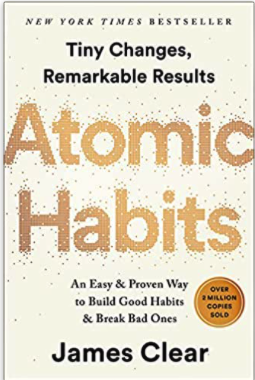 Offers a comprehensive framework for habit formation and personal improvement.
Offers a comprehensive framework for habit formation and personal improvement.
James Clear's "Atomic Habits" emphasizes the power of small, incremental changes in shaping our lives and behaviors. The book argues that focusing on systems rather than goals is key to long-term success and personal transformation. Clear provides practical strategies for building good habits and breaking bad ones, highlighting the compounding effect of consistent, tiny improvements over time.A relevant quote from the book is:"You do not rise to the level of your goals. You fall to the level of your systems."This quote encapsulates Clear's philosophy that sustainable change comes from developing robust systems and processes rather than simply setting ambitious goals.
10. How to Stop Feeling Like Sh*t: 14 Habits That Are Holding You Back from Happiness by Andrea Owen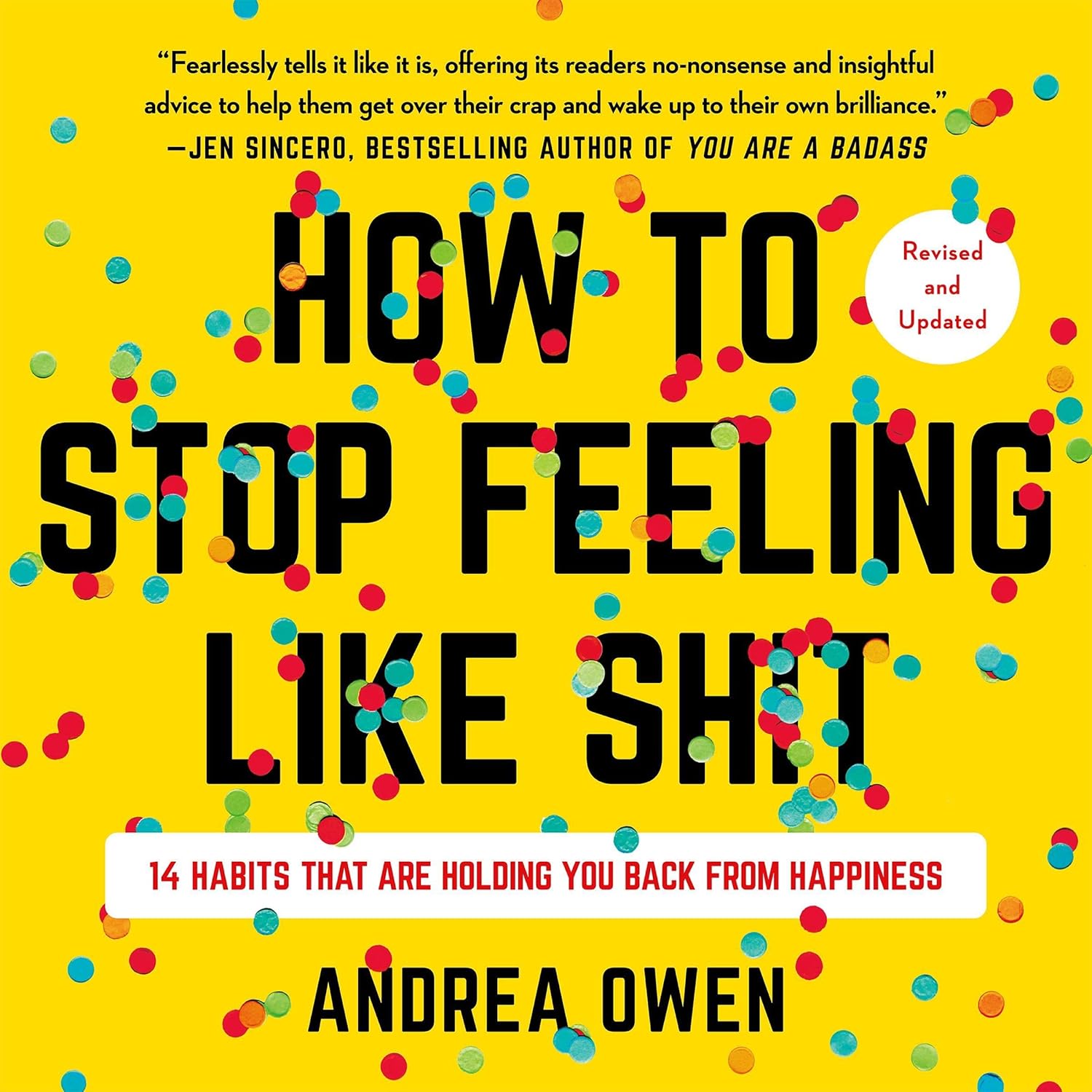
Provides insights into common habits that hinder happiness and how to overcome them.
"How to Stop Feeling Like Sh*t" by Andrea Owen offers a no-nonsense approach to addressing common self-destructive behaviors that hold women back from happiness. The book focuses on 14 specific habits, including perfectionism, people-pleasing, and catastrophizing, providing practical advice for overcoming each one. Owen combines personal anecdotes with actionable strategies, encouraging readers to confront their negative patterns and develop healthier mindsets. A key quote from the book that captures its essence is: "You're a f*cking miracle of being." This statement reflects Owen's direct style and her emphasis on recognizing one's inherent worth as a starting point for personal growth.
11. The Myth of Normal: Trauma, Illness, and Healing in a Toxic Culture by Gabor Maté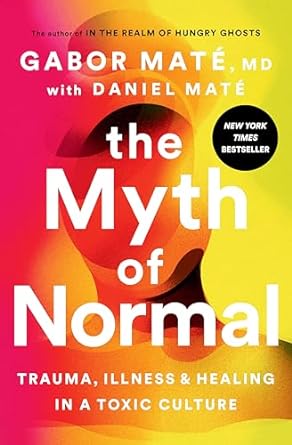 and his son Daniel Maté. The authors argue that what we consider "normal" in our culture is often detrimental to our well-being, contributing to chronic illnesses and mental health issues.
and his son Daniel Maté. The authors argue that what we consider "normal" in our culture is often detrimental to our well-being, contributing to chronic illnesses and mental health issues.
This idea encapsulates a key idea in Maté's book - that trauma is not defined by external events themselves, but rather by how those events impact a person internally. It shifts the focus from specific incidents to the lasting psychological and physiological effects within an individual.
12. Daring Greatly: How the Courage to Be Vulnerable Transforms the Way We Live, Love, Parent, and Lead by Brené Brown.
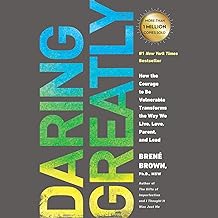 A thought-provoking exploration of vulnerability and its role in personal growth and relationships. Brown argues that embracing vulnerability, rather than shying away from it, is key to living a more authentic and fulfilling life. The book offers insights backed by Brown's research, providing readers with strategies to cultivate courage and resilience in various aspects of life, including parenting, leadership, and personal relationships.
A thought-provoking exploration of vulnerability and its role in personal growth and relationships. Brown argues that embracing vulnerability, rather than shying away from it, is key to living a more authentic and fulfilling life. The book offers insights backed by Brown's research, providing readers with strategies to cultivate courage and resilience in various aspects of life, including parenting, leadership, and personal relationships.
13. You Are a Badass: How to Stop Doubting Your Greatness and Start Living an Awesome Life by Jen Sincero.
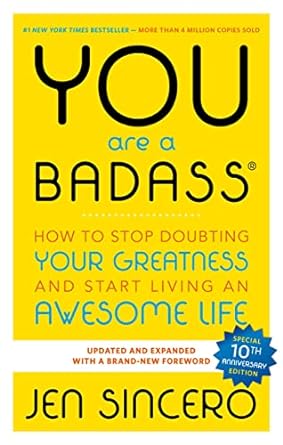 An engaging self-help book that combines humor with practical advice to empower readers to overcome self-doubt and take charge of their lives. Sincero's candid anecdotes and straightforward exercises encourage readers to identify and dismantle self-sabotaging beliefs, fostering a mindset geared toward success and self-love. While some may find the spiritual elements a bit excessive, the book remains a motivating read for those looking to make meaningful changes in their lives.
An engaging self-help book that combines humor with practical advice to empower readers to overcome self-doubt and take charge of their lives. Sincero's candid anecdotes and straightforward exercises encourage readers to identify and dismantle self-sabotaging beliefs, fostering a mindset geared toward success and self-love. While some may find the spiritual elements a bit excessive, the book remains a motivating read for those looking to make meaningful changes in their lives.
14. The Gifts of Imperfection: Let Go of Who You Think You’re Supposed to Be and Embrace Who You Are by Brené Brown.  Her book emphasizes the importance of embracing our flaws and vulnerabilities as essential components of living authentically. She encourages readers to cultivate self-compassion and recognize that true worthiness is inherent, regardless of imperfections. Brown asserts that "fitting in is about assessing a situation and becoming who you need to be to be accepted. Belonging, on the other hand, doesn’t require us to change who we are; it requires us to be who we are."
Her book emphasizes the importance of embracing our flaws and vulnerabilities as essential components of living authentically. She encourages readers to cultivate self-compassion and recognize that true worthiness is inherent, regardless of imperfections. Brown asserts that "fitting in is about assessing a situation and becoming who you need to be to be accepted. Belonging, on the other hand, doesn’t require us to change who we are; it requires us to be who we are."
15. How to Stop People-Pleasing** by Wind Goodfriend.
 Dr. Wind Goodfriend's book, How to Stop People-Pleasing, explores the psychological drivers behind the tendency to prioritize others' needs over one's own well-being. It emphasizes the importance of self-awareness and setting healthy boundaries to reclaim personal agency. Goodfriend encourages readers to reflect on their motivations and desires, fostering a deeper understanding of their true selves.A notable quote from the book is: "The first step in breaking free from people-pleasing is recognizing that your worth is not determined by others' approval."
Dr. Wind Goodfriend's book, How to Stop People-Pleasing, explores the psychological drivers behind the tendency to prioritize others' needs over one's own well-being. It emphasizes the importance of self-awareness and setting healthy boundaries to reclaim personal agency. Goodfriend encourages readers to reflect on their motivations and desires, fostering a deeper understanding of their true selves.A notable quote from the book is: "The first step in breaking free from people-pleasing is recognizing that your worth is not determined by others' approval."
16. The Creative Act: A Way of Being by Rick Rubin
 Explores creativity as a fundamental aspect of life, encouraging listeners to embrace their artistic side. "The Creative Act: A Way of Being" is a profound exploration of creativity as a fundamental aspect of human existence, rather than just a skill for artists. The book offers 78 philosophical musings on the nature of art and creativity, emphasizing that living as an artist is a practice that extends beyond traditional artistic pursuits. Rubin's insights encourage readers to embrace their unique perspectives, break conventional rules, and view creativity as an essential part of a fulfilling life, making this book valuable for anyone seeking to cultivate their creative potential.
Explores creativity as a fundamental aspect of life, encouraging listeners to embrace their artistic side. "The Creative Act: A Way of Being" is a profound exploration of creativity as a fundamental aspect of human existence, rather than just a skill for artists. The book offers 78 philosophical musings on the nature of art and creativity, emphasizing that living as an artist is a practice that extends beyond traditional artistic pursuits. Rubin's insights encourage readers to embrace their unique perspectives, break conventional rules, and view creativity as an essential part of a fulfilling life, making this book valuable for anyone seeking to cultivate their creative potential.
A significant quote from "The Creative Act: A Way of Being" by Rick Rubin is: "All that matters is that you are making something you love, to the best of your ability, here and now."
Click here for an audibook subscription.
17. Don't Believe Everything You Think: Why Your Thinking Is the Beginning & End of Suffering.
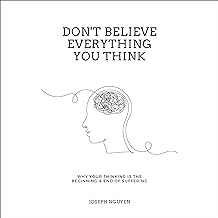 Joseph Nguyen's *Don't Believe Everything You Think: Why Your Thinking Is the Beginning & End of Suffering* explores the profound impact of thought on human suffering. The book posits that our thoughts are the root cause of all psychological and emotional distress, suggesting that by altering our relationship with these thoughts, we can transform our experiences and emotions. It emphasizes the importance of recognizing that everything is neutral until we assign meaning to it through our perceptions.
Joseph Nguyen's *Don't Believe Everything You Think: Why Your Thinking Is the Beginning & End of Suffering* explores the profound impact of thought on human suffering. The book posits that our thoughts are the root cause of all psychological and emotional distress, suggesting that by altering our relationship with these thoughts, we can transform our experiences and emotions. It emphasizes the importance of recognizing that everything is neutral until we assign meaning to it through our perceptions.
A notable quote from the book is:
"The root cause of our suffering is our own thinking."
18. The Body Keeps the Score: Brain, Mind, and Body in the Healing of Trauma
by Bessel van der Kolk M.D., Sean Pratt, et al.
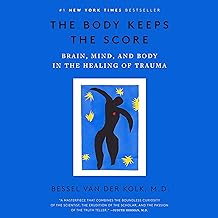 This book explores the profound impact of trauma on the mind, brain, and body and how trauma is not just a past event, but an ongoing imprint that affects how individuals manage their present experiences. Van der Kolk highlights the importance of addressing trauma through a holistic approach that involves both the mind and body.
This book explores the profound impact of trauma on the mind, brain, and body and how trauma is not just a past event, but an ongoing imprint that affects how individuals manage their present experiences. Van der Kolk highlights the importance of addressing trauma through a holistic approach that involves both the mind and body.
19. The Hidden Power of the Five Hearts by Kimberly Snyder
 Explores emotional well-being through the lens of heart-brain communication.
Explores emotional well-being through the lens of heart-brain communication.
20. Man's Search for Meaning by Viktor E. Frankl
 Discusses the rise of anxiety in modern society and offers coping strategies.
Discusses the rise of anxiety in modern society and offers coping strategies.
Viktor E. Frankl's 'Man's Search for Meaning' reveals the profound quest for purpose amid suffering, particularly through his experiences in Nazi concentration camps. He emphasizes that meaning can be found in three avenues: through work, love, and suffering, suggesting that even in the most dire circumstances, individuals can find significance in their struggles. Frankl asserts that "everything can be taken from a man but one thing: the last of the human freedoms—to choose one’s attitude in any given set of circumstances".
21. Mindset: The New Psychology of Success by Carol S. Dweck
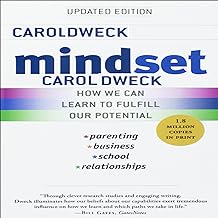 In "Mindset: The New Psychology of Success," Carol S. Dweck explores the transformative power of adopting a growth mindset, emphasizing that one's abilities can be developed through dedication and hard work. She contrasts this with a fixed mindset, where individuals believe their qualities are static and unchangeable, leading to a fear of failure and avoidance of challenges. Dweck asserts that embracing challenges and viewing effort as a pathway to mastery fosters resilience and a love for learning.
In "Mindset: The New Psychology of Success," Carol S. Dweck explores the transformative power of adopting a growth mindset, emphasizing that one's abilities can be developed through dedication and hard work. She contrasts this with a fixed mindset, where individuals believe their qualities are static and unchangeable, leading to a fear of failure and avoidance of challenges. Dweck asserts that embracing challenges and viewing effort as a pathway to mastery fosters resilience and a love for learning.
"The passion for stretching yourself and sticking to it, even (or especially) when it’s not going well, is the hallmark of the growth mindset."
22. The 5 AM Club: Own Your Morning, Elevate Your Life by Robin Sharma
 Robin Sharma's *The 5 AM Club: Own Your Morning, Elevate Your Life* emphasizes the transformative power of waking up early. The book presents a narrative in which a billionaire mentors two struggling individuals, teaching them that the first hour of the day is crucial for personal growth and productivity. Through a structured morning routine, Sharma argues that individuals can unlock their potential and achieve extraordinary results.
Robin Sharma's *The 5 AM Club: Own Your Morning, Elevate Your Life* emphasizes the transformative power of waking up early. The book presents a narrative in which a billionaire mentors two struggling individuals, teaching them that the first hour of the day is crucial for personal growth and productivity. Through a structured morning routine, Sharma argues that individuals can unlock their potential and achieve extraordinary results.Click here to get an audiobook subscription from Amazon!
Musashi Miyamoto – Review of ‘The Way of Walking Alone’
Managing ADHD: Strategies for Improving Focus, Organization, and Productivity
Tips for Improving Retention-Based Video Editing
Mastering Emotional Control: Strategies for Success
Six Principles in the Psychology of Persuasion: How to Influence Others
How to Identify Your Highest Excitement
The Hidden Message in Synchronicities: 5 Different Types of Synchronicity
Unlocking Your Super Brain: Neuroplasticity and Neurogenesis Explained
The Source by Dr. Tara Swart Book Review Key Takeaways
The Power of Visualization: Lessons from Natan Sharansky, Arnold Schwarzenegger, and Michael Phelps

Can a Breakup Lead to Depression?
It is not the strongest of the species that survives, nor the most intelligent that survives. It is the one that is most adaptive to change - Charles Darwin.
A breakup can cause stress. Stress can lead to depression.
Here's how:
First, the role of stress in the development, expression, and exacerbation of depression is well established. (ref 1-4).
1. (Stressful Life Events, Chronic Difficulties, and the Symptoms of Clinical Depression -https://www.ncbi.nlm.nih.gov/pmc... )
2. (Major Life Events and Major Chronic Difficulties Are Differentially Associated With History of Major Depressive Episodes
https://www.ncbi.nlm.nih.gov/pmc... )
3. (Stressful life events, genetic liability, and onset of an episode of major depression in women. Stressful life events, genetic liability, and onset of an episode of major depression in women.)
4. (Stress and depression. Stress and depression. )
Major depression is one of the most common and one of the most disabling psychological conditions. The impairment resulting from depression is severe, not only because of the pervasive impact of an episode of the disorder on the afflicted individual’s life, but also because of the high likelihood that depression will recur, often repeatedly, over the course of their lives. So when a breakup happens to a person, if they aren’t somewhat prepared and resilient, that breakup can be a substantial pivot point in their lives that might adversely affect them for years. And if that relationship dissolution put them into a tailspin, how are they going to respond when struck by the additional slings and arrows of life? e.g. death of their parents.
Stress also has a long term negative effect on circuits in the brain responsible for regulating emotions. (ref 5-7)
5. In stressful situations such as military training, US cadets report decreased ratings of pleasure in response to positive provocations
(The effect of stress on hedonic capacity.)
6. Women under acute stress produced by threat of shock show blunted reward responsiveness. 
(Acute stress reduces reward responsiveness: implications for depression. )
7. Individuals reporting higher levels of stress in the recent past show reduced reward learning (https://www.ncbi.nlm.nih.gov/pmc... )
People who have stress over time can end up having their emotion regulation circuitry compromised causing it to take longer to recover from stressful events and get back to a normal baseline. (Prolonged Marital Stress is Associated with Short-Lived Responses to Positive Stimuli https://www.ncbi.nlm.nih.gov/pmc...) That study had also shown that subjects were quick to feel negative emotions after the conditioned stimulus was presented and would stay in that stress state for longer. It’s like they’ve trained themselves to prefer emotional pain. They spend more time there so perhaps it seems most comfortable. And it’s like they dislike pleasure because when looking at pleasant stimuli, it would take them longer to make sense of positive images and when they did, those positive feelings were brief. Richie Davidson, the principal neuroscientist for that paper wrote that the untrained people are slow to recover and that they perseverate. Too much time thinking about the ex and feeling the stress of it repeatedly is won't make things better.
So recovering successfully after a breakup takes some skills. Not just for being able to bounce back, but skills to prevent sinking into the abyss due to the stress linkage to depression and the compromised emotion regulation circuitry.
Another contribution to depression the stress of a breakup can deliver is weakened reward circuitry. Fun becomes … funless.
(Increased Perceived Stress is Associated with Blunted Hedonic Capacity: Potential Implications for Depression Research
https://www.ncbi.nlm.nih.gov/pmc...)
This is why marital stress is associated with a higher incidence of psychiatric disorders, in particular major depression. A person can’t move forward after a breakup if the tools for moving forward are compromised.
Depending on a person's background and history with adversity, a breakup might be one of the worst experiences in life and they haven’t the history or support to get over it.
People that don’t move forward after a breakup are usually clinging to a model of the world that no longer exists. They might believe the ex is ‘the one’ and that their future is over without the ex. Some would rather die than change their beliefs. They focus on the past so much it becomes a habitually practiced skill. They get really good at feeling bad. That just puts them into a nosedive that can make escaping quite difficult, especially if they keep replaying old memories with strong emotions. “I cant get them back. They were the one. I miss him/her so much. I can’t live without them. I have no future without them. I think about them everyday". That kind of thinking is not going to cultivate resilience.
Feel bad long enough and the ability to bounce back gets harder and harder because this thinking becomes more stable and automatized. They start to believe their own lies and cognitive distortions. 'I’m worthless, I’m garbage, nobody will love me like that again, theres nothing to live for, nothing is enjoyable, I’ve lost everything, the light has gone out in my life.’
With this sabotage, they begin to feel worthless and stop doing anything solution based. e.g. researching problems instead of creative ways to make the best of situations.
Now, if there are no new experiences, the hippocampus begins to shrink because there are no new memory formations. Hippocampus is attributed with the consolidation of information from short term memory to long-term memory. What happens with a hippocampus that decreases in size due to a lack of new experiences? For this answer, a quote from Robert Sapolsky... "This structure plays a critical role in learning and memory, and the magnitude of the hippocampal volume loss (nearly 20% in some reports; see bullets. 8, 9, 10) helps explain some well-documented cognitive deficits that accompany major depression.'
8. Hippocampal atrophy in recurrent major depression.
10. Hippocampal volume reduction in major depression
Linda Graham writes ’Unless new experiences cause a rewiring of the old circuits, the patterns of coping we learned (even if they aren’t working) become our default responses to life’s set backs. As the twig is bent, so grows the tree.’ - Bouncing Back- Rewiring Your Brain for Maximum Resilience and Well Being. by Linda Graham, MFT

With all the continual stress and strain and focus on the past, their brain is helping them go deeper down a rough, painful, slow, sad road. More intrusive rumination, guilt, anger, sadness, shame, disappointment. It’s a habit. The ex is like a drug to the brain, the brain wants a hit of excitement so it goes to memories linked to pleasure, they start thinking of the past, pleasure is linked to the ex, that memory is brought forth and sometimes re-traumatize themselves by reopening an old unhealed unresolved wound and on it goes.
In Carol Dwecks book, ‘Mindset: Psychology of Success’, she writes about the difference in thinking between winners and losers. Winners have flexible mindsets. Losers have rigid, inflexible thinking.

What would happen to the car manufacturers or Apple if they stopped innovating? What happened to Blockbuster when it knew Netflix was coming down the line? Blockbuster held on to their same business model hoping patrons would still come in on a Friday night and pick up a VHS movie like always. Times changed, Blockbuster didn’t. Now they’re an example of how mental rigidity is a VIP pass to extinction. Ok almost extinction, there’s a blockbuster or two still around. In a nutshell, evolve or die. But it’s difficult if the evolve tools are compromised.
And that’s some of what’ can lead to depression with people that don’t get over a breakup. Although some folks might have been off center before the relationship started and then the breakup might have been the tipping point that called out their emotional style. A person might not know they’re bad at getting over stuff until it happens.
The brain rewires itself in response to experience, so if bad experiences and thoughts of the past is the main food for thought, that’s going to result in an impoverished brain and its going to want stimulation. Time to bring in the internet, alcohol, drugs or gambling, maybe become destructive & nihilistic to feel control over something in life. People with a tough time moving on post-breakup are ones that haven’t got any big future plans, just a past that they keep replaying which eats their future. It’s not their fault. It’s their brain. Without supportive themes and right attention to get back on track, they can suffer a gradual burn that slowly turns hope into ashes.
Then there are some that get PTSD after a breakup due to ending a relationship with a violent narcissist. This is going to create nightmares and flashbacks, the typical symptoms of PTSD.
And this is why neuroplasticity is a double edged sword. Experience shapes the brain and can change the brains structure and functioning. Which means the downward spiral can also become an upward spiral out of depression after a breakup. However, a change doesn’t always mean it’s for the better. You can use your mind to change your brain…for the better or the worse.
Fortunately, there are mental training strategies for engaging self-directed neuroplasticity to increase resilience and bounce back after a breakup. Also, well being is a skill that can be cultivated so there is lots of hope and escape routes that enable people to bounce back after a breakup and in some instances, achieve their own form of post-traumatic growth.
Most important is recognizing the prodromal symptoms of depression and doing something about it like taking lithium or doing mental training strategies to rewire the brain back to a more functional state.
‘Any new experience rewires the brain in some way. When we want to direct that rewiring - for example, when we want to rewire specifically for resilience-it’s necessary to carefully choose the new experiences that will help create that new neural structure and rewire old pathways effectively, efficiently and safely. We can do so by using self-directed neuroplasticity by directing focused attention on specific new experiences or on old patterns that we want to rewire.’ - Bouncing Back- Rewiring Your Brain for Maximum Resilience and Well Being. by Linda Graham, MFT
Another resource to consider to get over a breakup is 'How to Get Over Your Ex in 5 Hours'. This book focuses on people that had a breakup and then became bigger versions of themselves such as Tina Turner and J.K. Rowling. it also has a chapter on memory reconsolidation so you can discover how to rewrite memories of your ex. Additionally is a chapter about post-traumatic growth which can be inspirational lto know that this phenomena can be applied to your own life.
If you are interested in talking about mental health and are in the U.S. please call: 855-978-2988
Navigating Heartbreak: 6 Steps Women Who End Up Happier After A Breakup Do During The Healing Process
Experiencing...
How to Heal and Open Your Heart After a Breakup
Learn how to...
Habit Stacking Examples to Get Over a Breakup
Habit...
Reclaiming Your Life: 11 Essential Steps to Thrive After a Long Marriage Ends
Navigating...
How Long to Get Over a Breakup?
Some people...
12 Mental Toughness Books for a Resilient Mindset
Mental...
Best Self-Improvement Books for Positive Transformation
Reading...
Unlocking the Extraordinary: The David Goggins Mindset
In the world...
Overview on How to get Over Stuff Faster with excerpts from ‘How to Get Over Your Ex in 5 Hours’
After my...

“The Art of Stealth: How Viet Cong Sappers Cultivated a Mindset of Invisibility”
A Viet Cong sapper was a highly trained and elite commando unit that operated during the Vietnam War.
Role and Tactics
Organization and Structure
Equipment and Weapons
Training and Selection
Notable Attacks
How Sapper Units Were Trained and Selected, Particularly During the Vietnam War Era:
Vietnam's Secret Commando Training Program: Exporting Revolution During the Cold War
The Vietnamese Sapper Forces
The Training Program Takes Shape
Foreign Forces Trained by Vietnamese Sappers
Revolutionary/Guerrilla Groups:
Training Curriculum
Impact on Global Conflicts
El Salvador
Nicaragua
Colombia
Chile
Members of the Movement of the Revolutionary Left (MIR) received training from Vietnamese sappers as they fought against the dictatorship of Augusto Pinochet. While ultimately unsuccessful in overthrowing Pinochet, MIR's urban guerrilla tactics posed a persistent threat to the regime throughout the 1980s.
Training Locations and Methods
Vietnam
Cuba
Nicaragua
Training Challenges and Adaptations
Decline of the Program
Legacy and Modern Relevance
Conclusion
The Surprising Science Behind Manifesting Your Dream Life
What is the Harada Method and How to Use it for Achieving Your Goals.
52 Propaganda Techniques
Dr Rhonda Patrick Omega 3 Brain Benefits and the Surprising Results of Smokers
Fritz Perls, Dr. Milton Erickson and Virginia Satir – The Models of NLP Communication
What Are PTSD Symptoms in Women?
How to Cure PTSD Four Times in 5 Hours with Memory Reconsolidation Therapy
What is the Harada Method and How to Use it for Achieving Your Goals.
Neurologist Dr Mark D’Esposito on How to Improve Focus, Productivity, Planning and Achieving Goals
How PTSD Can Impact Women
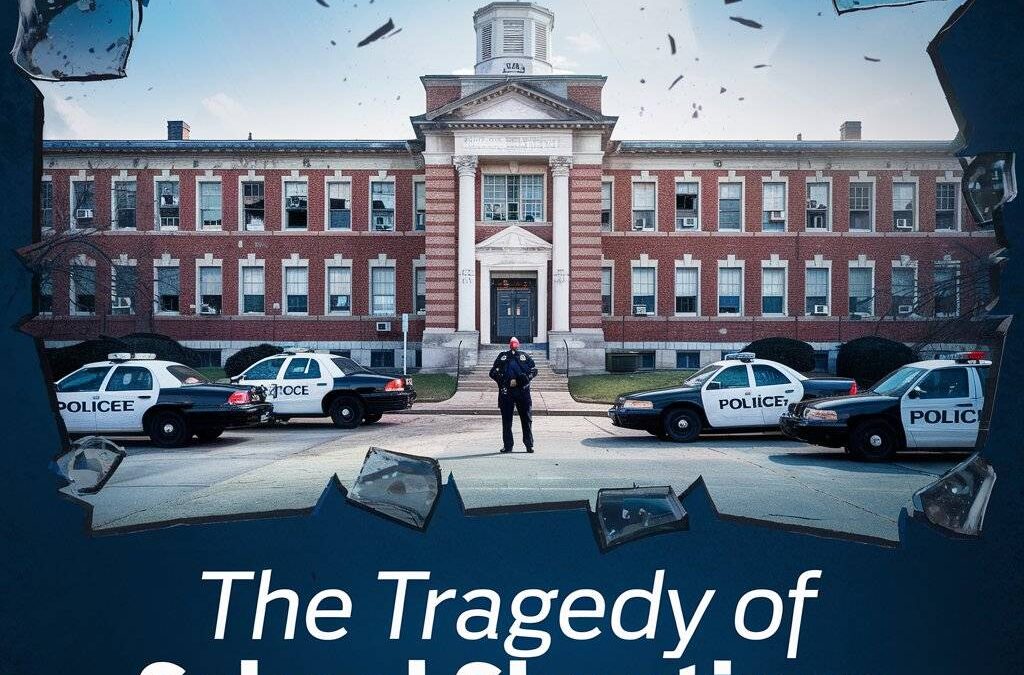
Why so Many School Shootings? The Tragedy of School Shootings in America: A Look into the Deadliest Incidents and the Minds Behind Them
The Deadliest School Shootings: A Grim Timeline
1. Virginia Tech Shooting (April 16, 2007)
2. Sandy Hook Elementary School Shooting (December 14, 2012)
3. Uvalde School Shooting (May 24, 2022)
4. Marjory Stoneman Douglas High School Shooting (February 14, 2018)
5. Columbine High School Massacre (April 20, 1999)
The Psychological Profile of School Shooters
The Impact and Aftermath
Prevention Strategies and Interventions
The Role of Research and Policy
History of the Five Most Damaging School Shootings
General Psychological Profile of Mass Shooters
Managing ADHD: Strategies for Improving Focus, Organization, and Productivity
Tips for Improving Retention-Based Video Editing
Mastering Emotional Control: Strategies for Success
Six Principles in the Psychology of Persuasion: How to Influence Others
The Hidden Message in Synchronicities: 5 Different Types of Synchronicity
Unlocking Your Super Brain: Neuroplasticity and Neurogenesis Explained
The Power of Visualization: Lessons from Natan Sharansky, Arnold Schwarzenegger, and Michael Phelps
Rewire Your Brain for Happiness: 7 Proven Techniques
Unlock Your Intuition: 4 Exercises to Develop Your Sixth Sense
Mastering Mindfulness: A Beginner’s Guide to Present Moment Awareness
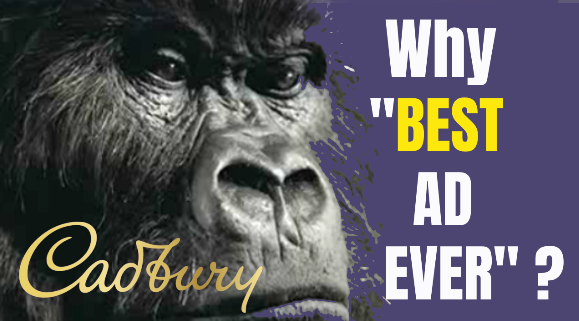
Greatest Advert of All Time – How The Cadbury Gorilla Became a Drumming Sensation That Revolutionized Advertising
This advert has been named "The Best Ad Ever". It turned an entire company around from a disaster -- and is the most memorable ad ever.
The Cadbury Gorilla: A Drumming Sensation That Revolutionized Advertising
In the world of advertising, few campaigns have achieved the level of iconic status and cultural impact as Cadbury's "Gorilla" advertisement. Launched in 2007, this 90-second masterpiece featuring a lifelike gorilla drumming to Phil Collins' "In the Air Tonight" not only revitalized the Cadbury brand but also set a new standard for creative advertising. This article delves into the fascinating story behind the ad, exploring its conception, production challenges, and the lasting impact it has had on both the advertising industry and popular culture.
The Genesis of an Idea
A Casual Conversation Sparks Creativity
The story of the Cadbury Gorilla ad begins, as many great ideas do, with a casual conversation. In 2007, the creative team at Fallon London, Cadbury's advertising agency, was engaged in a lighthearted discussion about the best drum solos in music history. It was during this exchange that director Juan Cabral had a sudden flash of inspiration: he envisioned a gorilla playing the drums.This seemingly random idea stuck with Cabral, who began to develop it further. He saw potential in the absurdity and unexpected nature of the concept, believing it could capture viewers' attention in a way that traditional chocolate advertisements couldn't. The team at Fallon, known for their innovative approach to advertising, was immediately intrigued by the concept.
The Challenge: Connecting Gorillas and Chocolate
At first glance, the connection between a drumming gorilla and Cadbury chocolate might seem tenuous at best. However, the creative team saw an opportunity to create an advertisement that was less about directly promoting a product and more about evoking a feeling – a sense of joy, whimsy, and unexpected delight that they believed aligned perfectly with the Cadbury brand.The timing of this creative breakthrough was crucial. Cadbury had recently faced a series of public relations challenges, including a salmonella scare that had significantly damaged the company's reputation and sales. The brand needed more than just a standard product advertisement; it needed a campaign that could reconnect consumers with the joy and nostalgia associated with Cadbury chocolate.
Developing the Concept
The Power of Music
As the idea evolved, the choice of music became a critical element. The team settled on Phil Collins' iconic 1981 hit "In the Air Tonight," known for its dramatic drum break. This song not only provided the perfect backdrop for the gorilla's performance but also tapped into a sense of nostalgia for many viewers, adding an extra layer of emotional resonance to the ad.
A Bold Departure from Traditional Advertising
What made the Gorilla concept truly revolutionary was its complete departure from traditional advertising norms. The ad featured no chocolate, no product shots, and no explicit mention of Cadbury beyond the final frame showing the company logo. This approach was a significant risk, challenging conventional wisdom about product placement and brand messaging.The creative team believed that by creating a piece of entertainment that viewers would genuinely enjoy and want to watch repeatedly, they could generate positive associations with the Cadbury brand without resorting to hard-sell tactics. This strategy aligned with emerging trends in advertising that emphasized creating shareable content and emotional connections with consumers.
Production Challenges
Finding the Perfect Gorilla
With the concept approved, the production team faced their first major challenge: creating a realistic gorilla that could convincingly play the drums. This was no small feat, as the success of the entire ad hinged on the believability of the gorilla's performance.

Garon Michael. The actor in the gorilla suit.
After extensive research and consultation, the team turned to Stan Winston Studio, the renowned special effects company known for their work on films like "Jurassic Park" and "Terminator." The studio created a highly detailed, animatronic gorilla suit that could provide the realism and expressiveness needed for the ad.
Casting the Man Behind the Mask
With the suit created, the next challenge was finding someone who could bring the gorilla to life. The production team cast Garon Michael, an actor with extensive experience in creature suits, having previously portrayed apes in films like "Congo" and "Planet of the Apes."Michael's task was far from simple. He had to convey a range of emotions through the gorilla suit, from anticipation to pure joy, all while mimicking the movements of an expert drummer. This required extensive rehearsal and physical training to ensure that the drumming looked authentic and matched the iconic Phil Collins track perfectly.
Achieving the Right Look and Feel
Director Juan Cabral wanted the ad to have a documentary-like feel, as if viewers were witnessing a genuine, spontaneous moment. To achieve this, the team paid meticulous attention to every detail, from the lighting of the set to the subtle movements of the gorilla before the drumming begins.The ad was shot over several days, with multiple takes to capture the perfect performance. The final cut seamlessly blended the best elements from these takes, creating a fluid and captivating 90-second narrative that built to the climactic drum solo.
The Ad's Release and Immediate Impact
A Viral Sensation
When the Cadbury Gorilla ad was released in August 2007, it immediately captured the public's imagination. In an era when social media was just beginning to show its potential for viral content, the ad spread rapidly across platforms like YouTube. Within the first week of its release, it had garnered over 500,000 views online – a significant number for the time.Television audiences were equally captivated. The ad's premiere during the season finale of "Big Brother" in the UK ensured a large initial viewership, but it was the subsequent word-of-mouth and repeated viewings that truly cemented its status as a cultural phenomenon.
Critical Acclaim and Industry Recognition
The advertising industry quickly recognized the Gorilla ad as something special. It received widespread critical acclaim for its innovative approach and emotional impact. The campaign went on to win numerous awards, including the prestigious Film Grand Prix Lion at the Cannes Lions International Festival of Creativity in 2008.Critics and industry experts praised the ad for its boldness in eschewing traditional product-focused advertising in favor of pure entertainment. It was seen as a watershed moment in advertising, demonstrating the power of creating content that viewers actively sought out and shared, rather than trying to interrupt their viewing experience with hard-sell messages.
Impact on Cadbury's Brand and Sales
Revitalizing the Brand
The Gorilla ad came at a crucial time for Cadbury. Following the salmonella scare and product recalls of 2006, the company's reputation had taken a significant hit. The ad played a key role in rebuilding consumer trust and reigniting positive associations with the brand.By creating a piece of content that brought joy and sparked conversations, Cadbury was able to reconnect with consumers on an emotional level. The ad reminded people of the simple pleasure associated with Cadbury chocolate, without ever needing to show the product itself.
Boosting Sales
The impact of the ad on Cadbury's bottom line was significant and immediate. Reports indicated that sales of Cadbury Dairy Milk increased by 9-10% in the months following the ad's release. This boost in sales was particularly impressive given the challenges the company had faced in the preceding year.More broadly, the ad helped to reinvigorate the entire Cadbury brand portfolio. The goodwill generated by the Gorilla campaign extended beyond Dairy Milk to other Cadbury products, contributing to an overall strengthening of the company's market position.
Cultural Impact and Legacy
Spawning Imitations and Parodies
As with many cultural phenomena, the Cadbury Gorilla ad inspired numerous imitations and parodies. From other brands attempting to create their own viral sensations to amateur videos of people recreating the gorilla's performance, the ad's influence was felt far and wide.These imitations served to further embed the ad in popular culture, extending its reach and impact well beyond its initial run. Even years after its release, references to the drumming gorilla continued to appear in various forms of media and entertainment.
Resurgence of Phil Collins
An unexpected side effect of the ad's success was a renewed interest in Phil Collins' music. "In the Air Tonight" experienced a surge in popularity, re-entering music charts and introducing the song to a new generation of listeners. This demonstrated the ad's power not just as a marketing tool, but as a piece of content that could influence broader cultural trends.
Changing the Advertising Landscape
The success of the Gorilla ad had a profound impact on the advertising industry. It challenged conventional wisdom about what constituted effective advertising, encouraging brands and agencies to think more creatively about how they could engage consumers.In the years following the ad's release, there was a noticeable shift towards more entertainment-focused advertising, with brands increasingly looking to create shareable content that could capture audience attention in the age of social media and online video.
Here is the original commercial. Enjoy!
Lessons for the Advertising Industry
The Power of Emotional Connection
One of the key lessons from the Gorilla ad was the importance of creating an emotional connection with viewers. By focusing on evoking joy and nostalgia rather than pushing product features, Cadbury was able to create a more lasting and positive association with their brand.
Taking Creative Risks
The ad's success also highlighted the potential rewards of taking creative risks. By departing so radically from traditional chocolate advertising, Cadbury and Fallon created something truly memorable and impactful. This encouraged other brands to be bolder in their creative approaches.
The Value of Shareable Content
In the digital age, the Gorilla ad demonstrated the immense value of creating content that viewers want to share. By making an ad that people actively sought out and showed to friends, Cadbury achieved a level of organic reach that traditional advertising could rarely match.
The Road to Approval
Initial Skepticism
The journey to getting the Gorilla ad approved was fraught with challenges. Initially, the concept was met with skepticism from Cadbury's executives. The idea of a 90-second ad featuring a gorilla playing drums, with no direct mention of chocolate, seemed too radical and risky. As Phil Rumbol, Cadbury’s director of marketing at the time, recalls, "When I then shared it with my superiors, it’s fair to say they thought I was mad. They said: ‘Let’s get this right. You want to make an ad that’s three times longer than a normal ad, has got no Cadbury’s chocolate in it and there’s no message?’.
Persistence Pays Off
Despite the initial pushback, Rumbol was convinced of the ad's potential. He believed that the ad could "rekindle the love" among consumers and set about persuading his colleagues. This persistence paid off, and eventually, the ad was given the green light.
Production Details
The Perfect Gorilla Costume
Finding the right gorilla costume was critical to the ad's success. The team sourced a realistic animatronic suit from Stan Winston Studio, known for its work on films like "Jurassic Park." The suit needed to be convincing enough to give the ad a "documentary" feel, as if viewers were witnessing a real gorilla playing the drums.
The Man Inside the Suit
The next challenge was finding someone to wear the suit and bring the gorilla to life. Garon Michael, an actor with experience in creature suits, was cast for the role. He practiced extensively to mimic the drumming style needed for the performance, ensuring that the movements looked authentic and matched the iconic Phil Collins track perfectly.
The Ad's Release and Reception
Going Viral
When the Cadbury Gorilla ad was released, it quickly went viral. On launch night, the video was also released on YouTube, where it garnered 100,000 hits the following day. The ad's unexpected approach and sheer entertainment value resonated with audiences, leading to widespread sharing and discussion.
Awards and Accolades
The ad received numerous awards, including the prestigious Film Grand Prix Lion at the Cannes Lions International Festival of Creativity in 2008. It was praised for its innovative approach and emotional impact, setting a new standard for creative advertising.
The Ad's Legacy
Cultural Impact
The Gorilla ad became a cultural touchstone, inspiring parodies and tributes from various brands and media. It also led to a renewed interest in Phil Collins' music, with "In the Air Tonight" re-entering music charts and introducing the song to a new generation of listeners.
Influence on Advertising
The success of the Gorilla ad had a lasting impact on the advertising industry. It encouraged brands to think more creatively and focus on creating shareable content that could engage consumers on an emotional level. The ad demonstrated that sometimes the most powerful way to sell a product is not to sell at all, but to create a moment of pure, unexpected joy.
A Drumming Gorilla's Lasting Legacy
The Cadbury Gorilla advertisement stands as a testament to the power of creative advertising. From its unlikely conception in a casual office conversation to its status as one of the most celebrated ads in history, the campaign demonstrated how a bold, emotionally resonant idea could capture the public imagination and revitalize a brand.
The Gorilla ad became a cultural touchstone, inspiring imitations, sparking conversations, and changing perceptions of what advertising could be. Its influence can still be felt in the advertising industry today, where brands continue to seek that perfect blend of entertainment and emotional connection that can turn an ad into a sensation. After we've looked back on this remarkable campaign, it's clear that sometimes the most powerful way to sell a product is not to sell at all, but to create a moment of pure, unexpected joy. In doing so, Cadbury didn't just sell chocolate; they created a lasting memory that continues to bring smiles to faces years after that gorilla first sat down at the drums.
That's what makes it the best ad ever.
The Double-Edged Sword: Is Social Media Good or Bad for Mental Health?
The Impact of TikTok Effects on Brain Health: What You Need to Know
Benefits of Journaling
How to Get Over the Death of a Service Dog like a Vietnam Veteran in 78 minutes.
PTSD Symptoms in Women: Understanding the Unique Challenges
How Can Couples Maintain Intimacy While Sleeping Apart?
The Ultimate Guide to Walking with a Weighted Vest for Maximum Fitness Benefits
Audiobooks Market Booming: How to Capitalize on the $53 Billion Opportunity
The New Midlife Crisis: Navigating the Challenges of Middle Age

Ways to Your Impact Your Business with AI: Transforming Industries and Operations
Artificial Intelligence (AI) has emerged as a transformative force in the business world, revolutionizing workflows, methodologies, and entire industries. By mimicking human intelligence through sophisticated algorithms and technologies, AI is reshaping how companies operate, analyze data, and interact with customers. Its pervasive presence in various software applications and tools is fundamentally changing the way work is done, information is accessed, and decisions are made.
The Advantages of AI in Business
The integration of AI into business operations offers a multitude of benefits across various functions and departments. Noémie Ellezam, chief digital strategy officer at Société Générale, describes AI as a catalyst for their digital strategy, with far-reaching impacts across all business areas. Let's explore some of the key advantages:
Enhanced Customer Interaction and Experience
AI-powered tools like chatbots and virtual assistants are revolutionizing customer service interactions. These intelligent systems can handle a wide range of customer inquiries, provide instant responses, and offer personalized recommendations. By automating routine queries, businesses can provide 24/7 support, reduce wait times, and free up human agents to handle more complex issues. This not only improves customer satisfaction but also significantly reduces operational costs.
Data Analysis and Insights
One of AI's most powerful capabilities is its ability to process and analyze vast amounts of data at incredible speeds. AI algorithms can sift through structured and unstructured data, identifying patterns, trends, and insights that might be impossible for humans to detect. This capability enables businesses to make data-driven decisions, predict future trends, and gain a competitive edge in their markets. From sales forecasting to risk assessment, AI-driven analytics are helping companies make smarter, more informed choices.
Automation and Streamlining of Business Operations
AI is playing a crucial role in automating repetitive tasks and streamlining business processes. By integrating AI into existing tools and workflows, companies can significantly enhance efficiency and productivity. For example, AI can automate data entry, generate reports, schedule meetings, and even perform complex calculations. This automation not only reduces the risk of human error but also allows employees to focus on higher-value tasks that require creativity and strategic thinking.
Personalized Recommendations and Targeting
By analyzing consumer data and behavior patterns, AI enables businesses to offer highly personalized recommendations and targeted messaging. This level of personalization can significantly improve customer engagement, conversion rates, and overall customer loyalty. From e-commerce platforms suggesting products based on browsing history to streaming services recommending content tailored to individual preferences, AI-driven personalization is becoming increasingly sophisticated and effective.
AI Applications Across Business Functions
The versatility of AI allows for its application across various business sectors and departments. Here's a closer look at how AI is being utilized in different areas of business:
Accounting and Finance
AI-driven accounting software is revolutionizing financial management by automating tasks such as cash flow projections, transaction categorization, and tax computations. These tools can analyze financial data to identify trends, flag anomalies, and even predict future financial performance. In the realm of fraud detection, AI algorithms can process vast amounts of transaction data to identify suspicious patterns and potential fraudulent activities, significantly enhancing security measures.
Content Creation and Marketing
Generative AI is making waves in content creation, supporting tasks like writing, research, graphic design, and video production. This technology is particularly beneficial for marketing campaigns, document creation, and translation services. AI-powered tools can generate blog posts, social media content, and even personalized email campaigns, allowing marketing teams to produce more content efficiently and tailor their messaging to specific audience segments.
Customer Service
AI-powered chatbots and virtual assistants are transforming customer service operations. These intelligent systems can handle a wide range of customer inquiries, provide instant responses, and even process transactions. By automating routine queries, businesses can provide round-the-clock support, reduce wait times, and allow human agents to focus on more complex customer issues that require empathy and nuanced problem-solving.
Cybersecurity
In an era of increasing cyber threats, AI is playing a crucial role in bolstering cybersecurity efforts. AI-powered security systems can monitor networks in real-time, detect anomalies, and respond to potential threats faster than human analysts. Machine learning algorithms can analyze patterns of behavior to identify potential security risks and even predict future attack vectors, allowing businesses to stay one step ahead of cybercriminals.
IT Operations
The integration of AI into IT operations, often referred to as AIOps, is streamlining data management, automating routine tasks, and providing valuable insights for quicker issue resolution. AI can predict and prevent IT outages, optimize network performance, and automate software updates and patches. This not only improves the efficiency of IT departments but also enhances the overall stability and reliability of business operations.
Human Resources
AI is transforming human resources management by automating tasks like resume screening, candidate matching, and even initial interviews. AI-powered HR tools can analyze employee data to predict turnover, identify skill gaps, and suggest personalized training programs. These capabilities not only streamline HR processes but also contribute to more effective talent management and employee development strategies.
Sales and Marketing
In sales and marketing, AI is being used to analyze customer data, predict buying behaviors, and personalize marketing campaigns. AI-powered Customer Relationship Management (CRM) systems can provide sales teams with actionable insights, helping them prioritize leads and tailor their approach to individual customers. In digital marketing, AI algorithms can optimize ad placements, personalize content, and even predict the success of marketing campaigns before they launch.
Supply Chain Management
AI is revolutionizing supply chain management by optimizing inventory levels, predicting demand, and improving logistics efficiency. Machine learning algorithms can analyze historical data and external factors to forecast demand more accurately, reducing overstock and stockouts. AI-powered logistics systems can optimize routing, predict maintenance needs for vehicles and equipment, and even automate warehouse operations with robotics.
Challenges and Ethical Considerations
While the benefits of AI in business are substantial, its implementation also comes with significant challenges and ethical considerations:
Data Privacy and Security
As AI systems rely heavily on data, ensuring the privacy and security of this information is paramount. Businesses must navigate complex data protection regulations and implement robust security measures to protect sensitive customer and company data.
Ethical Use of AI
The use of AI raises important ethical questions, particularly around bias in AI algorithms and the potential for AI to be used in ways that infringe on individual privacy or rights. Businesses must develop clear ethical guidelines for AI use and ensure transparency in how AI systems make decisions.
Workforce Displacement and Skill Gaps
While AI can enhance productivity and efficiency, it also has the potential to displace certain jobs. Businesses need to consider the impact of AI on their workforce and invest in reskilling and upskilling programs to help employees adapt to new roles and technologies.
Integration and Compatibility Challenges
Implementing AI systems often requires significant changes to existing IT infrastructure and processes. Ensuring compatibility with legacy systems and integrating AI tools into existing workflows can be complex and costly.
The Future of AI in Business
Looking ahead, the role of AI in business is set to expand and evolve:
Integrated AI Assistance
The future will likely see a shift towards more integrated AI assistance across all business operations, moving beyond standalone AI applications to AI-enhanced tools and processes throughout the organization.
Responsible AI and Governance
As AI becomes more prevalent, there will be an increased focus on responsible AI development and use. This includes developing robust governance frameworks, ensuring transparency in AI decision-making, and addressing issues of bias and fairness.
Collaborative Innovation
The advancement of AI in business will require collaboration among governments, businesses, and individuals. This collaborative approach will drive innovation while also addressing the societal impacts of AI technology.
The impact of AI on business is profound and far-reaching. From enhancing customer experiences to optimizing complex supply chains, AI is driving efficiency, productivity, and innovation across industries. However, the successful implementation of AI requires careful consideration of ethical implications, data privacy concerns, and workforce impacts.
As we move forward, the businesses that will thrive are those that can effectively harness the power of AI while navigating its challenges. This involves not just adopting AI technologies, but also fostering a culture of innovation, investing in employee skills, and maintaining a strong ethical framework for AI use.
The AI revolution in business is not just about technology – it's about reimagining how businesses operate, compete, and create value in an increasingly digital world. As AI continues to evolve, it will undoubtedly open up new possibilities and challenges, shaping the future of business in ways we are only beginning to understand.

What is a “Woke Mind Virus”: Unpacking a Concept in Modern Discourse
The Evolution of "Woke"
Understanding the "Mind Virus" Concept
Key Criticisms of the "Woke Mind Virus"
Counter-Arguments

Summary of Elon Musk & Dr Jordan Peterson interview – The Woke Mind Virus is a Threat to Civilization
In a discussion between Dr. Jordan B. Peterson and Elon Musk. Musk and Peterson speak about the concept of the "woke mind virus" and its implications for society.
Here is Elon Musk talking about losing his son to the woke mind virus.
Here is a short clip & a couple of quotes from Elon Musk’s interview with The Daily Wire’s Jordan Peterson:
"My son Xavier is dead, k*lled by the woke mind virus."
"I vowed to destroy the woke mind virus after that... and we are making some progress."
— Mayor (@Mayoralpodcast) July 22, 2024
Here are the key points discussed:
1. Definition and Spread: Musk describes the "woke mind virus" as a set of ideologies that he believes are spreading rapidly through educational institutions and social media. He argues that these ideologies are divisive and detrimental to societal cohesion.
2. Impact on Free Speech: Both Musk and Peterson express concerns about how wokeness can lead to the suppression of free speech. They discuss instances where individuals have faced backlash or professional consequences for expressing opinions that deviate from "woke" norms.
3. Meritocracy and Competence: Musk criticizes the emphasis on identity politics, suggesting that it undermines meritocracy and competence. He argues that prioritizing diversity over merit can lead to inefficiencies and a decline in overall performance in various sectors.
4. Educational Institutions: The conversation highlights the role of universities and colleges in propagating woke ideologies. Musk and Peterson suggest that these institutions are indoctrinating students with a particular worldview, which they believe is harmful.
5. Cultural and Societal Consequences: Both speakers discuss the broader cultural and societal consequences of the "woke mind virus." They argue that it fosters a victimhood mentality, increases polarization, and threatens democratic principles by stifling open dialogue and debate.
6. Solutions and Resistance: Towards the end of the discussion, Musk and Peterson talk about potential solutions to counteract the spread of the "woke mind virus." They emphasize the importance of promoting free speech, critical thinking, and resilience against ideological conformity.
The video is a critical examination of wokeness and its perceived impact on various aspects of society, as viewed through the lens of Musk and Peterson.
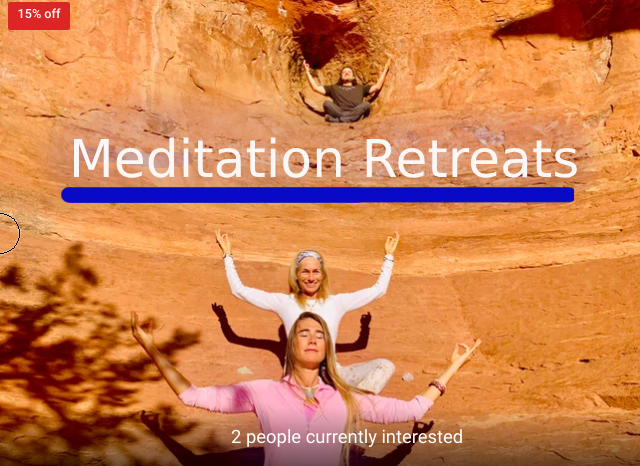
The 5-Day Re-Invent Meditation Retreat in Sedona, Arizona
The Essence of the Retreat
The Setting: Sedona's Mystical Landscape
Daily Schedule and Activities
Accommodation and Amenities
The Transformative Journey
The Power of Community
Integration and Beyond
Who Should Attend?
Preparing for the Retreat
A Gateway to Transformation
Why You Should Go On A Meditation Retreat
100 Best Audiobooks on Behavioral Economics, Psychology, Meditation, Self-improvement
Top 22 Best Audiobooks Focused on Mental Health and Self-improvement
Can a Breakup Lead to Depression?
“The Art of Stealth: How Viet Cong Sappers Cultivated a Mindset of Invisibility”
Why so Many School Shootings? The Tragedy of School Shootings in America: A Look into the Deadliest Incidents and the Minds Behind Them
Greatest Advert of All Time – How The Cadbury Gorilla Became a Drumming Sensation That Revolutionized Advertising
Ways to Your Impact Your Business with AI: Transforming Industries and Operations
What is a “Woke Mind Virus”: Unpacking a Concept in Modern Discourse
Summary of Elon Musk & Dr Jordan Peterson interview – The Woke Mind Virus is a Threat to Civilization

What are Valuable Skills to Build Now and For the Future?
The skills required for success in the workplace are constantly changing. As we navigate through 2024 and look towards the future, it's crucial to understand which skills are most valuable now and which will become increasingly important in the years to come. This article explores the essential skills that professionals should focus on developing to stay competitive and thrive in the modern workplace and beyond.
The Changing Landscape of Work
Before going into specific skills, it's important to understand the context in which these skills are becoming valuable. The workplace is undergoing significant transformations driven by factors such as:
1. Technological advancements, particularly in artificial intelligence and automation
2. Globalization and increased connectivity
3. Changing work models, including remote and hybrid work arrangements
4. The growing importance of sustainability and social responsibility
5. Rapid pace of change across industries
These factors are reshaping job roles, creating new opportunities, and rendering some traditional skills obsolete. As a result, professionals must adapt and acquire new competencies to remain relevant and valuable in the job market.
Core Skills for the Modern Workplace
1. Analytical Thinking
Analytical thinking has emerged as the most crucial core skill identified by companies, accounting for 9.1% of reported core skills. This skill involves the ability to examine and break down complex problems, identify patterns, and draw logical conclusions based on available data.
Why it's important:
- Enables data-driven decision-making
- Helps in problem-solving and strategy development
- Facilitates process optimization and efficiency improvements
How to develop it:
- Practice breaking down complex problems into smaller components
- Learn data analysis techniques and tools
- Engage in case studies and scenario-based learning
2. Creative Thinking
Ranked second in importance for 2023, creative thinking is predicted to have the fastest growth (73%) in demand over the next five years. This skill involves generating original ideas, thinking outside the box, and approaching problems from new angles.
Why it's important:
- Drives innovation and product development
- Helps in finding unique solutions to challenges
- Enhances adaptability in rapidly changing environments
How to develop it:
- Engage in brainstorming exercises regularly
- Practice lateral thinking techniques
- Expose yourself to diverse experiences and perspectives
3. Digital Literacy
As technology becomes increasingly integrated into every aspect of work, digital literacy has become a fundamental skill for professionals across all industries.
Why it's important:
- Enables efficient use of digital tools and platforms
- Facilitates remote work and digital collaboration
- Enhances productivity and communication
Key areas to focus on:
- Proficiency in cloud computing
- Understanding of data analysis tools
- Basics of cybersecurity
- Familiarity with industry-specific software and applications
4. Emotional Intelligence
Emotional intelligence (EQ) refers to the ability to recognize, understand, and manage emotions, both in oneself and others. This skill is crucial for promoting harmonious work environments and effective leadership.
Why it's important:
- Improves team dynamics and collaboration
- Enhances leadership capabilities
- Facilitates better customer relations and conflict resolution
How to develop it:
- Practice self-awareness and reflection
- Develop active listening skills
- Learn to recognize and respond to others' emotional states
- Seek feedback and work on areas of improvement
5. Critical Thinking
In an era of information overload and widespread misinformation, the ability to think critically and evaluate information based on evidence is more important than ever.
Why it's important:
- Helps in making informed decisions
- Enables effective problem-solving
- Protects against misinformation and biases
How to develop it:
- Practice questioning assumptions and seeking evidence
- Learn to evaluate sources of information
- Engage in debates and discussions on complex topics
- Develop logical reasoning skills
Emerging Skills for the Future
While the core skills mentioned above are crucial for success in the current workplace, several emerging skills are expected to become increasingly important in the near future.
1. AI and Big Data Skills
With the rapid advancement of artificial intelligence and the growing importance of data-driven decision-making, skills related to AI and big data are expected to see significant growth in demand, with a projected 60% increase by 2027.
Key areas to focus on:
- Machine learning and deep learning
- Data visualization and interpretation
- AI ethics and responsible AI development
- Big data analytics and management
2. Adaptability and Flexibility
Given the rapid pace of change in the workplace, the ability to adapt to new situations, technologies, and work environments is becoming increasingly valuable.
Why it's important:
- Enables professionals to thrive in dynamic work environments
- Facilitates smooth transitions during organizational changes
- Enhances resilience in the face of challenges
How to develop it:
- Embrace change and seek out new experiences
- Practice stepping out of your comfort zone
- Develop a growth mindset
- Learn from failures and setbacks
3. Communication and Collaboration in Digital Environments
As work environments become more diverse and distributed, effective communication and teamwork skills, particularly in digital settings, are crucial.
Key areas to focus on:
- Virtual presentation skills
- Asynchronous communication techniques
- Cross-cultural communication
- Digital collaboration tools and best practices
4. Leadership and Social Influence
Leadership skills are no longer relevant only for top positions but are increasingly important for every individual within an organization.
Why it's important:
- Facilitates career advancement
- Enhances team performance and motivation
- Drives organizational change and innovation
Key areas to focus on:
- Inspirational leadership
- Inclusive leadership practices
- Change management
- Conflict resolution and negotiation
5. Curiosity and Lifelong Learning
With the rapid pace of change in technology and work practices, a mindset of continuous learning is essential to stay relevant in the future workplace.
Why it's important:
- Enables professionals to stay up-to-date with industry trends
- Facilitates career transitions and growth
- Enhances problem-solving and innovation capabilities
How to develop it:
- Cultivate a growth mindset
- Set personal learning goals
- Engage in diverse learning experiences (e.g., online courses, workshops, reading)
- Seek out mentors and learning opportunities within your organization
6. Time Management and Productivity
Efficient time management is crucial for productivity, regardless of work setting. As work environments become more flexible and autonomous, the ability to manage one's time effectively becomes even more important.
Key areas to focus on:
- Prioritization techniques
- Productivity tools and methodologies
- Work-life balance strategies
- Effective delegation and task management
7. Prompt Engineering for AI
As AI becomes more prevalent in various industries, the ability to effectively communicate with and guide AI systems through precise prompts is becoming increasingly valuable.
Why it's important:
- Enhances the effectiveness of AI tools and applications
- Enables professionals to leverage AI for improved productivity
- Facilitates the development of AI-powered solutions
How to develop it:
- Learn the basics of natural language processing
- Practice crafting clear and specific prompts for AI systems
- Understand the limitations and capabilities of different AI models
- Stay updated on advancements in AI and language models
The Importance of Upskilling and Reskilling
Given the rapid evolution of required skills in the workplace, continuous learning and development have become essential for career success. Companies are recognizing this need, with 82% planning to invest in on-the-job learning and training programs for their employees.
Professionals should take advantage of these opportunities and also invest in their own skill development through:
1. Online courses and certifications
2. Industry conferences and workshops
3. Mentorship programs
4. Cross-functional projects and job rotations
5. Self-directed learning and experimentation
Balancing Technical and Soft Skills
While many of the emerging skills are technical in nature, it's important to note that soft skills remain crucial for success in the workplace. A well-rounded professional should strive to develop both technical and soft skills to maximize their value and adaptability in the job market.
Technical skills provide the foundation for performing specific job functions, while soft skills enable effective collaboration, communication, and problem-solving across various contexts.
The Role of Education and Training Institutions
As the demand for these skills grows, education and training institutions play a crucial role in preparing the workforce of the future. There is an increasing need for:
1. Updated curricula that reflect current industry needs
2. Practical, hands-on learning experiences
3. Collaboration between educational institutions and industry partners
4. Flexible and modular learning options to facilitate lifelong learning
5. Focus on developing transferable skills alongside domain-specific knowledge
Conclusion
The workplace of the future will require a diverse set of skills that span both technical abilities and soft skills. Analytical and creative thinking, digital literacy, emotional intelligence, and critical thinking form the core skills that professionals should focus on developing. Emerging skills such as AI and big data proficiency, adaptability, digital communication and collaboration, leadership, and continuous learning will become increasingly important in the coming years.
By investing in these skills and adopting a mindset of lifelong learning, professionals can position themselves for success in the ever-evolving job market. Organizations, educational institutions, and individuals all have a role to play in fostering the development of these crucial skills to create a workforce that is prepared for the challenges and opportunities of the future.
As we navigate through rapid technological advancements and changing work paradigms, the ability to adapt and continuously learn will be the ultimate skill that ensures long-term success and relevance in the workplace. By embracing these changes and proactively developing the skills outlined in this article, professionals can not only survive but thrive in the dynamic and exciting future of work.











